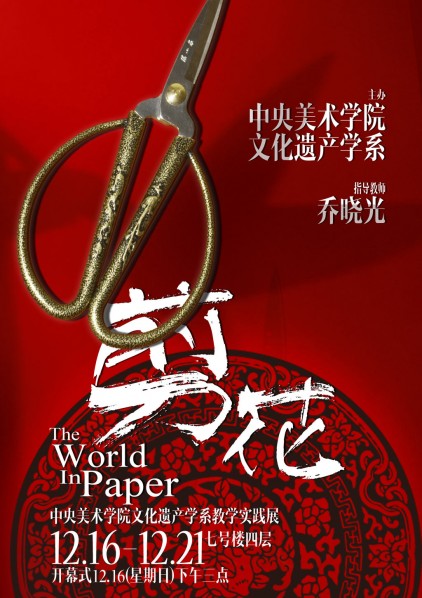
Paper-cut as a traditional folk art which tends to have a marginalized status in contemporary society, along with traditional paper-cut art inheritors that have passed away, the real part of paper-cut art belongs to Chinese folk art though it has been on the verge of death. Although the protection of the intangible cultural heritage has attracted more and more concern and attention by contemporary artists, it has achieved little success. Paper-cut art is a living culture, relying on oral instruction transferred from generation to generation. Paper-cut art heritage needs interpersonal convergence, but the road is long and steep. As the students of the first Department of Cultural Heritage in China, we are not only in the classroom listening to the traditional essence of paper cutting, copying and writing practice sentiment, but also we hope the world would learn and experience the charm of this art through our own strength, which is the mission shouldered on this generation of students.
Students of the Humanities School at CAFA focus their studies on art history and literary theory, which would not prevent them from creating excellent paper-cut works. This is related to the features that paper-cut art derives from folklore and ordinary people and it is a simple, but very expressive art. The majority of folk paper-cut artists are rural women who have not received cultural education, let alone a basis in plastic arts. It is not exaggerated that "those who can bear children are able to cut flowers". Paper cutting has infinite charm, which does not come from superb skills, but from the release of the soul during the creative process of paper-cutting, as well as the accumulation of ancient traditions.
This has been integrated into modern urban life, if we do not share the life experience of the folk paper-cut artists, it is impossible to create authentic folk art, even with traditional patterns and techniques, but just the imitation and reproduction of previous generations. But we have our own advantage in learning and carrying forward the tradition, we have a new society and life experience different from older generations. Through learning traditional paper-cutting, we will put new thinking and experience into our paper-cut creation, diluting the practical functions of paper-cutting. Therefore we can increase its artistry and distribute new glamour to it while inheriting the significance of traditional paper-cut patterns. This exhibition intends to bring profound understanding and completely new experiences to the audience who ardently love traditional culture and paper-cuts which is achieved through the sincere endeavors.




























